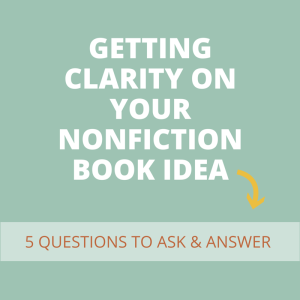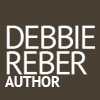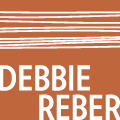 You’ve got a nonfiction book idea. Maybe it’s simply a word. Maybe it’s a thesis statement. Maybe it’s a hazy vision.
You’ve got a nonfiction book idea. Maybe it’s simply a word. Maybe it’s a thesis statement. Maybe it’s a hazy vision.
So, what now?
If you’re what I refer to as a “cliff diver,” someone who likes to plunge right into a project as soon as an idea pops into their head, you’re likely already halfway through writing chapter one.
But if you’re like the rest of us? You might be paralyzed, overwhelmed, at a loss about how to move forward. You might be all of the above.
The first thing I do when I’m brewing on a new book idea is spend some time getting clarity around the main concept. To do this, I grab a fresh notebook, my favorite fine-tipped marker, and scrawl out my answer to the following 5 questions:
1. WHAT IS MY IDEA, IN A NUTSHELL? (one sentence to one paragraph roughly describing the concept, in whatever stage of formation, for the book)
2. WHAT IS MY “WORKING TITLE,” INCLUDING SUBTITLE? (one or more working titles to help me start to see my amorphous concept as an actual book)
3. WHAT IS MY “HOOK?”(brainstorming initial thoughts around what is uniquely me and uniquely sellable about my book idea)
4. WHAT KINDS OF THEMES / SUBJECTS / CHAPTERS WILL I INCLUDE? (a bullet-pointed list of as many key themes I foresee being a part of the book)
5. WHAT SPARKED THIS IDEA? (one sentence to one paragraph capturing my initial inspiration for the project, an important step that shouldn’t be skipped since the emotional connection to that inspiration can be a guiding beacon moving forward)
Now, I always dive into all of these topics in more detail before I actually begin writing, but in this initial stage, taking the time to noodle over these questions is an important step because it:
A. Puts my stake in the ground. After all, I’ve started a new notebook for God’s sake. The book is now real. Working on it is something I’m doing.
B. Gets the creative process moving. By free-writing my thoughts about what the book could be, I’ve engaged my mind in a new puzzle, and one it will continue to work on even when I’m not paying attention (or even awake).
C. It’s a start. And that ain’t nothing.
Up next, we’ll look at getting clarity around the KIND of book you want to write, including format and function.

